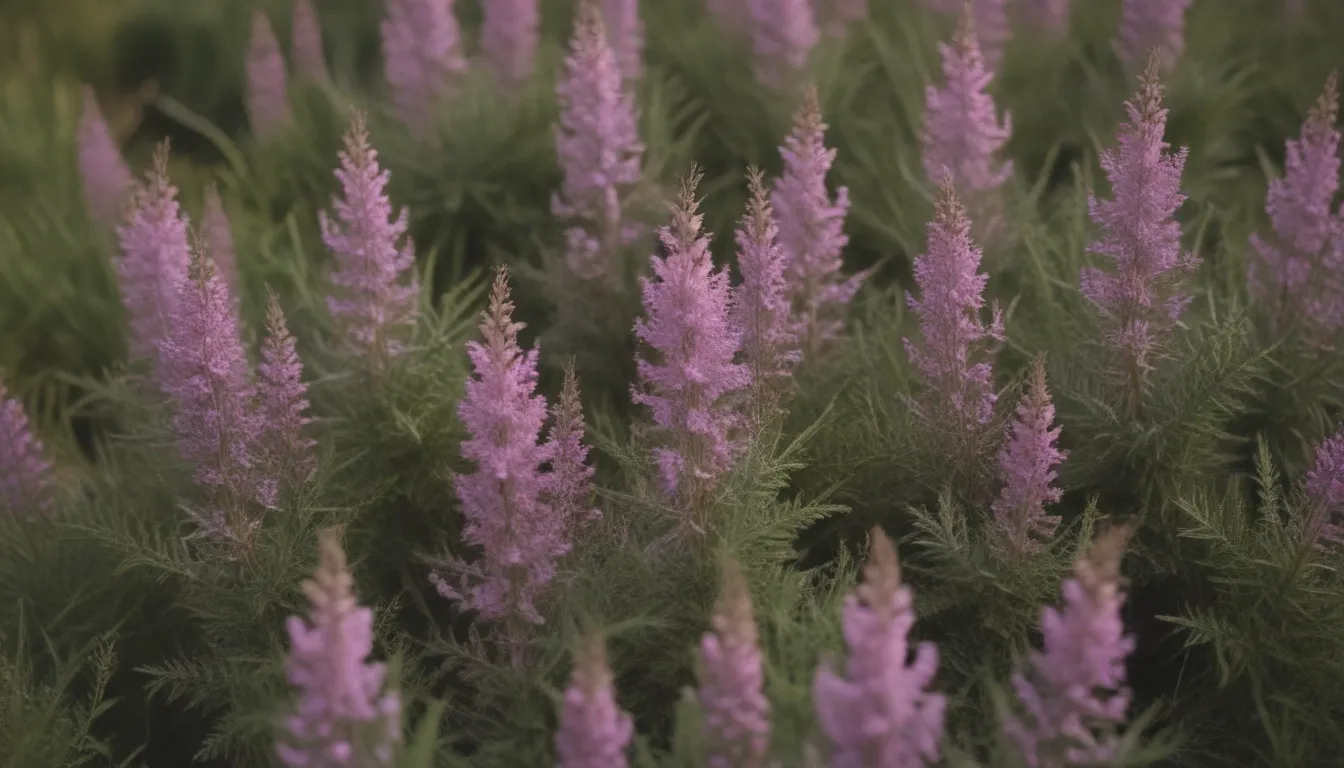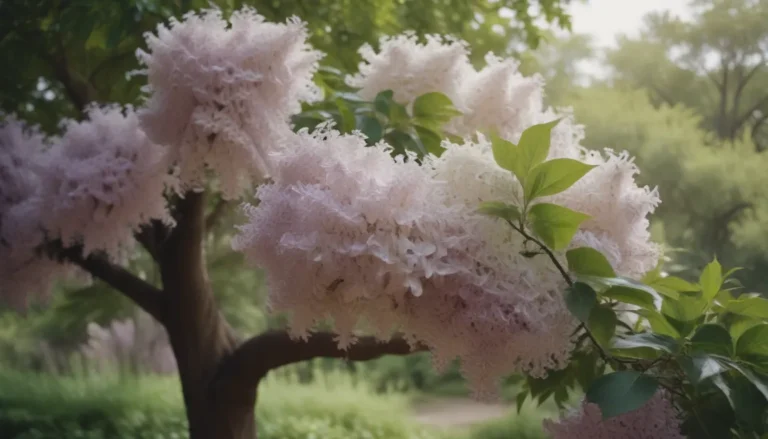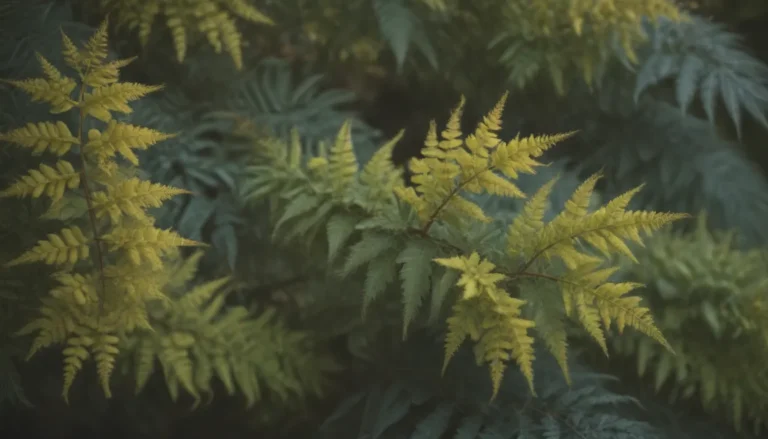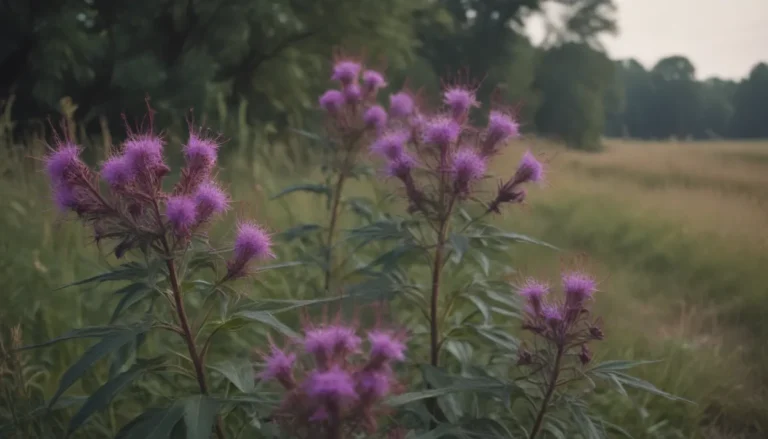A Comprehensive Guide on Growing and Caring for Heather Plants

Heather, also known as Scotch heather or ling, is a charming woody shrub that adds a burst of color to any garden with its abundant pink-purple flowers that bloom from midsummer to early fall. Whether you’re a seasoned gardener or a beginner looking to add this beautiful plant to your landscape, this comprehensive guide will provide you with all the information you need to successfully grow and care for heather plants.
Why Choose Heather?
Heather is a versatile and low-maintenance plant that can thrive in various conditions, making it a popular choice for many gardeners. Here are some reasons why you should consider adding heather to your garden:
- Perennial: Heather is a perennial plant in cooler areas, meaning it will come back year after year without needing to be replanted.
- Colorful Flowers: With its vibrant pink-purple flowers, heather adds a pop of color to any garden.
- Low-Maintenance: Once established in the right spot, heather requires minimal care and attention.
- Versatile: Heather can tolerate different soil types and is well-suited for various garden styles, from hedges to ground covers.
With these benefits in mind, let’s dive into the key care requirements for growing heather plants successfully.
Heather Care Guide
Heather plants may be easy to care for, but it’s essential to provide them with the right conditions to ensure their growth and blooming success. Here are the main care requirements you should keep in mind:
Light
Heather thrives in full sun, especially in zones 4 and 5. However, in zone 6, it might appreciate some afternoon shade to protect it from the harsh midday sun.
Soil
Well-drained soil is crucial for heather plants to prevent waterlogging, which can lead to root rot. Heather grows best in sandy or rocky soils and thrives in peaty, acidic bogs and moorlands. Remember that heather does not need fertile soil and can even tolerate salt spray.
Water
Water young heather plants regularly, ensuring they receive about one inch of water per week. Once established, heather has average water needs, but plants in warmer zones may require additional irrigation to thrive.
Temperature and Humidity
Heather prefers a cool and moist climate, with its evergreen foliage intensifying in color during cooler temperatures. While heather is typically hardy in zones 5 to 7, it may require winter protection in colder zones.
Fertilizer
Heather plants do not need frequent fertilization, especially if they are planted in soil with organic matter or peat moss. However, you can provide an acidifying nitrogen fertilizer designed for acid-loving plants in early spring, ensuring not to exceed the recommended dosage.
Remember, excessive fertilization can lead to leggy growth, so it’s essential to use fertilizer sparingly and at the right time.
Types of Heather Cultivars
When choosing a heather cultivar, consider the plant’s height and form to determine how it will fit into your garden design. Here are some popular heather cultivars to consider:
- C. vulgaris ‘Firefly’
- C. vulgaris ‘Robert Chapman’
- C. vulgaris ‘Wickwar Flame’
- C. vulgaris ‘Bonita’
- C. vulgaris ‘Kinlochruel’
Selecting the right cultivar will help you achieve the desired look for your garden, whether you prefer tall hedges or low-growing ground covers.
Pruning Heather Plants
To maintain healthy and compact heather plants, it’s important to prune them in early spring. Pruning helps to encourage new growth and prevents the plant from becoming leggy or overgrown. By trimming your heather plants regularly, you can ensure they remain bushy and attractive throughout the growing season.
Propagating Heather
While heather plants can be grown from seed, it’s best to propagate them through cuttings for accurate reproduction of the parent plant. By taking cuttings in the summer, rooting them indoors, and planting them outdoors in the spring, you can easily propagate your heather plants and expand your garden.
How to Grow Heather From Seed
If you’re interested in growing heather from seed, mimic the plant’s natural germination conditions by creating a wildfire-like environment. With the right tools and techniques, you can successfully grow heather from seed and enjoy the beauty of these plants in your garden.
Potting and Repotting
When potting heather plants, choose a large container with adequate drainage holes to prevent waterlogging. Heather plants do not require deep planters, so a wide pot one size larger than the previous one will suffice. Ensure the plant is potted at the same depth as its nursery pot for optimal growth.
Overwintering Heather Plants
While heather is a hardy plant, it’s important to protect potted plants in colder zones, such as zone 4 or northward. By insulating the plant with polystyrene foam and mulching heavily, you can ensure your heather plants survive the winter and thrive come spring.
Common Plant Diseases and Pests
Heather plants are susceptible to powdery mildew and root rot, which can affect their health and appearance. By following these tips, you can prevent and manage common plant diseases:
- Powdery Mildew: Avoid overhead watering, prune plants regularly, and use fungicides to control powdery mildew.
- Root Rot: Ensure well-draining soil to prevent waterlogged conditions that lead to root rot. Watch for signs of root rot and take prompt action to save your plants.
Tips for Blooming Success
Heather plants should bloom consistently year after year when provided with proper care and conditions. To encourage blooming and maintain healthy plants, follow these tips:
- Bloom Months: Heather flowers bloom from late July to November in the northern hemisphere.
- Encourage More Blooms: Provide heather plants with well-draining acidic soil and at least six hours of sunlight daily to promote blooming.
- Deadheading: While not necessary, deadheading faded flowers can encourage new growth and prolonged blooming.
Common Problems and Solutions
Heather plants are generally hardy but may encounter issues such as browning foliage, leggy growth, and pest infestations. Here are some common problems and solutions for maintaining healthy heather plants:
- Browning Foliage: Check for signs of root rot and ensure proper drainage to prevent browning foliage. Trim back affected areas and replant in well-draining soil.
- Leggy Stems: Avoid over-fertilizing and provide sufficient sunlight to prevent leggy growth. Pruning leggy stems can help promote healthy growth.
- Pest Infestations: Watch for signs of mites and scale insects, which can cause leaf drop and distorted leaves. Use insecticidal soap or horticultural oil to control pests and protect your plants.
Heather vs. Heath: What’s the Difference?
While heather and heath are often confused, they are distinct plant species with unique characteristics. Heather shrubs belong to the Calluna genus and are known for their colorful flowers and adaptability to various conditions. In contrast, heath plants are part of the Ericagenus genus and have needle-shaped leaves, making them less cold-hardy than heather.
Fun Facts About Heather Plants
Did you know that heather plants were traditionally harvested for making brooms? The botanical name Calluna derives from the Greek word “kallunein,” meaning to cleanse, reflecting the plant’s historical uses. Fortunately, heather is non-toxic to both people and animals, making it a safe and attractive addition to any garden.
Conclusion
Heather plants are a charming and versatile addition to any garden, offering year-round color and low-maintenance care. By following the tips and guidelines outlined in this comprehensive guide, you can successfully grow and care for heather plants in your own outdoor space. Whether you’re a beginner gardener or a seasoned pro, heather plants are sure to add beauty and vibrancy to your landscape for years to come.





